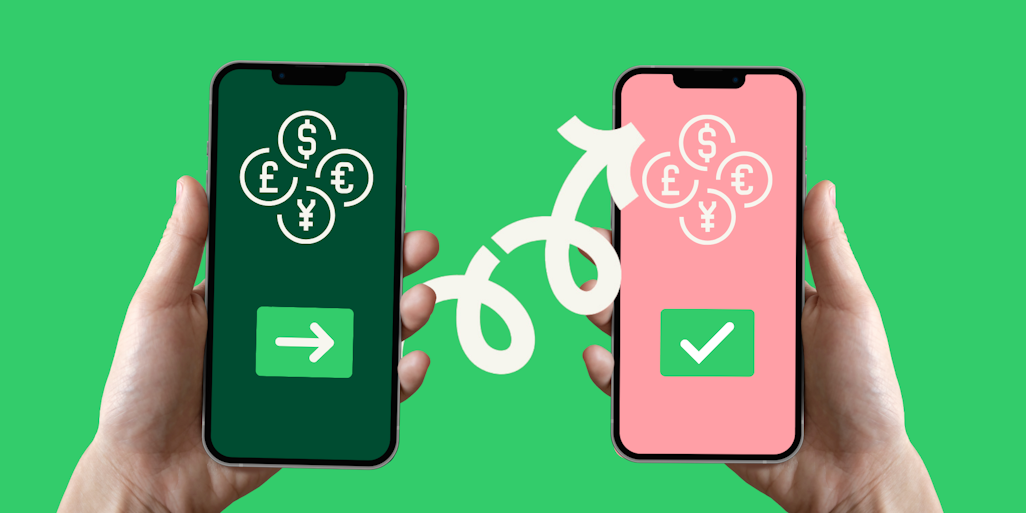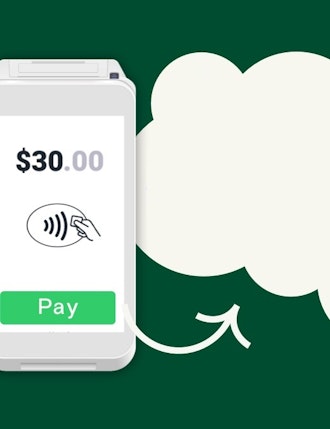Today, the payment landscape continues to change. Travel back 15 years ago and it was a market dominated by the card networks, with the occasional disruptor like PayPal. Now, alternative payment methods continue to come to the fore offering a better customer experience for users and more cost-effective solutions for merchants.
One such method that’s continuing to make a big splash is account-to-account (A2A) payments. Let’s deep dive into it.
What are account-to-account payments?
Account-to-account payments are direct money transfers from one account to another. Money travels directly without unnecessary intermediaries, like bank cards.
For merchants, A2A promises reduced transaction costs, quicker settlement, enhanced security, and more. For customers, it improves checkout flows and reduces the steps they need to take to make a purchase.
And their use continues to grow. Findings from the FIS 2023 Global Payments Report show that in 2022, there were almost 70% real-time payment (RTP) schemes providing high-speed payment rails. The impacts of this included:
- Helping to drive A2A payments to account for US$525 billion in global e-commerce transaction value.
- This is up 13 percent from US$463 billion in 2021.
- In the US, A2A accounted for 9% of e-commerce transaction value in 2022.
- This is set to grow to 11% in 2026.
- In Germany, it covers 43% of all non-cash transactions.
The different types of account-to-account payments
Account-to-account payments can be split into two types:
- Push payments
- Pull payments
Push payments
Push payments are used for one-off payments that require payers to manually send money from their bank account to the recipient’s bank account. Where once this required users to manually log-in to their bank account, technology is today changing the game.
APIs can now trigger push payments, and can send consumers a notification or an action prompt for a money transfer. Open banking has also enabled payment initiation service (PIS) providers to expand the use of push payments. Now licensed payment service providers (PSPs) can initiate a single direct payment from the consumer’s bank account to the merchant’s account with the consent of the consumer.
It's fast becoming a quick and easy way for customers to pay both online and in-store.
Pull payments
This is where companies automatically withdraw money from customers’ accounts – think a subscription or other recurring payments. The account holder needs to provide their explicit consent for pull payments to be initiated from their account.
The rise of A2A payments
Being able to pay directly from your bank account to another bank account – whether a person’s (peer-to-peer payments) or a business’ for bill payments – has been around for a long time. So why has A2A only come to the fore in the last couple of years?
It comes down to open banking. This has enabled third-party financial service providers to enter the market that was long ruled by legacy banks. Along with the European PSD2 directive, we’re now seeing increased opportunities for more innovative and effective payment methods.
Open banking has now made account-to-account payment more technologically advanced and easy for users. Now there’s no need to fill in lengthy forms for recurring payments or to log-in to your bank every time you want to make a payment. Open banking has completely changed the landscape, ensuring A2A payments can offer more benefits for users and merchants.
What are the benefits of account-to-account payments?
Merchants enjoy a variety of benefits from A2A, including:
- Low transaction costs – with no card network involvement, transaction costs are reduced.
- Instant settlements – the money can reach the merchant in seconds to help boost their cash flow.
- Higher conversion rates – a better customer experience and ease of paying can help boost conversion rates.
- Client reach – everyone with a bank account can access A2A payments.
- Easy Integration - A2A payments can easily be integrated with other systems such as accounting systems,potentially eliminating the need for invoicing and allowing automatic account reconciliation.
- Competitive Advantage - Because A2A allows reduced transaction costs, this is a saving that can be passed on to merchants and ultimately customers, allowing for cheaper product pricing It’s no wonder many merchants are offering incentives for users to use A2A payments.
Consumers benefit from:
- Better customer experience – there’s no need to enter their card details. Consumers can simply link their bank account to the merchant’s app and pay with one click.
- Better security – multi-factor authentication can reduce the risk of fraud.
- Instant account balance updates - enabling customers to effectively manage their finance, in-turn reducing overdraft and late payment risks.
- Immediate settlement proof - knowing that a payment has been made to the right individual or organisation is reassuring for customers especially where purchases are high value.
What does the future hold?
A2A payments aren’t going anywhere. In the Netherlands, leading player in the space iDEAL is the premier e-commerce A2A solution, and reportedly accounts for 70% of all e-commerce transactions in the country. Having been acquired by the European Payments Initiative (EPI), it is now set to become a standard for A2A payments across the continent.
We’re also seeing a change in position from the major players, Visa and Mastercard. Previously, there was simply no way around a physical card, so they could dictate the rules for everyone. But today's world is different, as cards get more and more virtualized and live on customer's phones, the relevance of cards gets somehow threatened by alternative payment rails (whether A2A or Buy Now Pay Later).
Now we’re seeing Mastercard and Visa investing in A2A solution providers like Vocalink to offer alternative rails, promote network tokenization to get closer to the customer and merchants again, or work heavily with the new intermediaries like Apple.
Right now, the networks need to become more accommodating and innovative to stay relevant compared to 15 years ago, as they move further away from the real customer interaction.
A2A payments are here to stay. And that can only be a good thing for merchants and customers. Watch this space.










